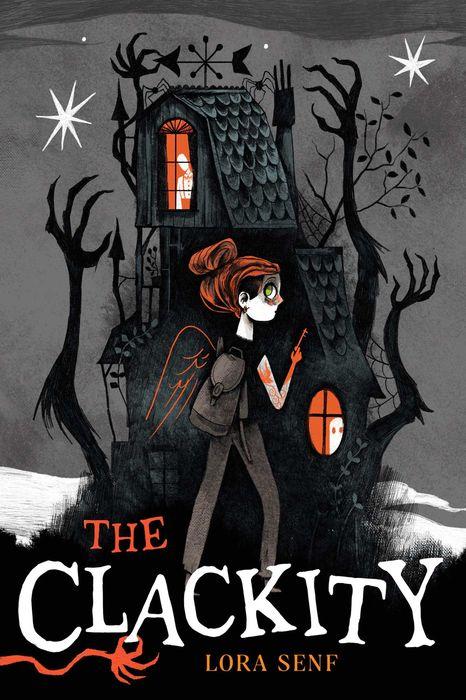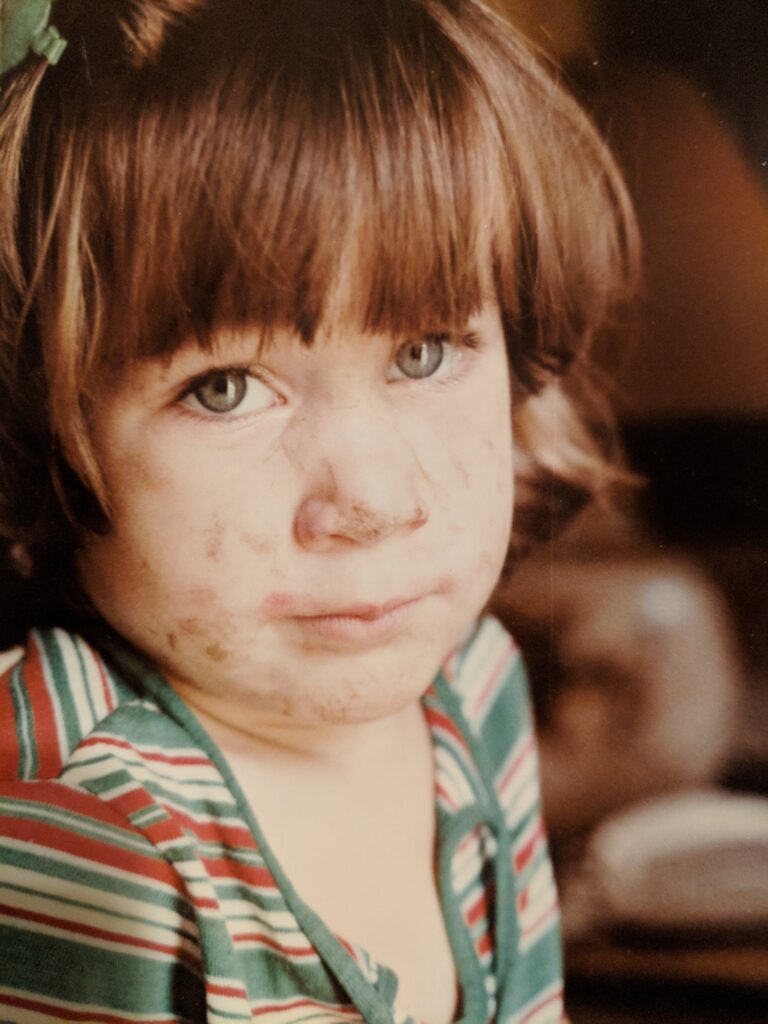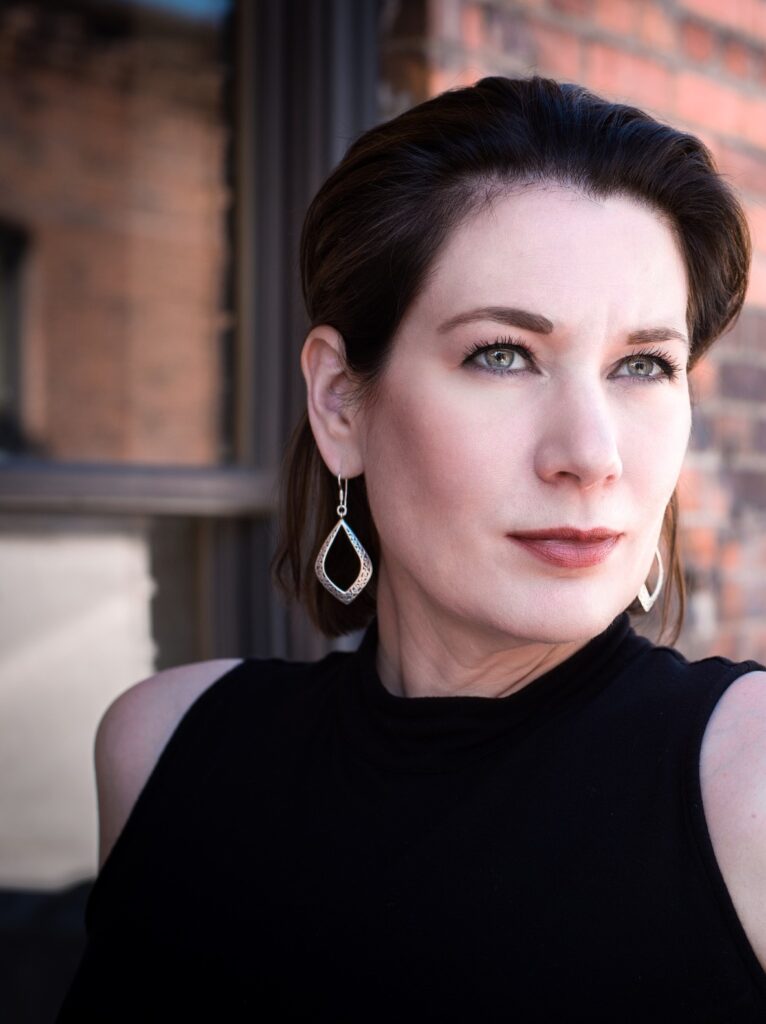Sometimes a Monster is Just a Monster, Sometimes it’s More: Anxiety and Middle Grade Horror, a guest post by Lora Senf

I have anxiety. The kind you see a doctor and take medication for.
Not so long ago, I’d said that aloud to very few people, not because I’m embarrassed about it, but because I didn’t want it to define me. Moments I was weak, or failed, I didn’t want a ready-made excuse—an “Oh, she has anxiety” get-out-of-jail-free card—nor the patronizing comments I knew were just waiting to come out of some well-meaning mouths.
Today, I have no problem revealing my struggles with anxiety to the world. I suppose in part my newly-found comfort comes from knowing how very not alone I am as more and more people share their own experiences with mental health issues. I also came to admit just how exhausting it is, pretending to be a version of myself that doesn’t exist (I’m frankly not sure who I thought I was serving or protecting by doing so. Myself? Friends or loved ones or colleagues? All of the above is probably the correct answer). And somewhere along the way, I decided of all the things I’ve done that should come with an apology, having anxiety just isn’t among them. Lastly, I had an epiphany that anxiety is just a piece of me and doesn’t define me any more than any other singular aspect of my whole self.
ADVERTISEMENT
ADVERTISEMENT

My anxiety started very early in life; in fact, I don’t remember it not being present. But I was a child of the ‘80s and it wasn’t all that common for parents to recognize these things in their children, much less take those children for professional help. In hindsight, there were clues in my elementary years I can now see but I’m not so sure anyone else could at the time:
- Being afraid to speak to most people. When I did speak, immediately, silently mouthing my words back to myself to make sure I’d not said anything embarrassing. I don’t recall how long this phase lasted, but the memory is fresh enough I believe I could fall back into the habit if I allowed myself.
- Speaking of, I had (and to a much lesser degree still have) a deep, deep fear of both embarrassing myself and being mocked – especially being mocked when I couldn’t hear it. Unhelpfully, I just assumed it was happening. A lot.
- Building a shelter under my bed the summer before kindergarten—and stockpiling it with blankets and mason jars full of water and saltines—because I was afraid I would have to save my family from some unidentified threat.
- Deep discomfort with other children, aside from a very few close friends. I preferred the company of adults but, more than that, I preferred to be alone.
- Insomnia.
Over the course of my life, my anxiety stopped me from doing many things—big and small. It also pushed me into doing things that at worst were dangerous, at the very least ill-advised. There were consequences. I sometimes self-medicated for my anxiety, sometimes in ways that ultimately made it exponentially worse. And, again, more consequences.
It was not until a few years ago that I acknowledged I might have a real, organic problem that I couldn’t fix on my own.
Finally, finally I sought help.
After a lifetime spent convinced I was simply, unmendably, broken, the act of naming the thing took away a bit of its power. Then it got better—slowly and not without setbacks. The wrong medications made it worse, or caused my generally latent depression to surface violently. But it did get better.
Today—for the most part—I have it under control.
What does all this have to do with writing? Well, let me tell you.
Growing up with undiagnosed and untreated anxiety—let’s call it what it is, mental illness—was what led me to write the main character in my debut middle grade horror, The Clackity, as a young girl with anxiety. Disorders like anxiety manifest a bit differently in everyone, so twelve-year-old Evelyn Von Rathe—Evie, to us—has anxiety that looks a whole lot like mine. The way she experiences it is the way I experience it, because that is the best point of reference I have. For us, anxiety is a low and constant hum that never really goes away, but sometimes becomes a deafening foghorn. Mostly manageable, sometimes not.
But The Clackity, the first of the Blight Harbor Books, isn’t an Anxiety Book, or an Issue Book about a girl suffering from and being victimized by the things she struggles with. It’s about a girl who is strong and brave (though certainly not fearless) despite her anxiety. Sometimes because of it. Unlike young me, Evie knows what she’s dealing with, and knows how to cope with it as best a kid can. Evie isn’t perfect by a long shot, but she’s pretty awesome all the same. She most certainly isn’t broken.

I wrote Evie because I wanted to write authentically, and to do that I had to write a kid I understood. I wrote the girl I so badly wanted to be, a girl I would have looked up to. I wrote her because I think there are a lot of kids out there that will see themselves in Evie, and who might benefit from seeing her be brave and strong and afraid and anxious and a badass all at the same time. Side note: when the difficult-to-please Kirkus said, “Evie is a capable, vulnerable, brave, and anxious hero; she’s real,” I knew I’d gotten it right.
What’s more, I very intentionally dropped Evie right into the middle of a haunted town and a horror story. For a kid like Evie, a sort-of-solo quest filled with frightening and dangerous things was the ultimate test of her ability to handle her anxiety. For young readers, age-appropriate horror is a safe, contained place to process fear and to practice being brave. And good horror written for young readers usually comes with a good dose of hope thrown in, and hope is good for us all.
For lots of reasons, I hope Evie and The Clackity reach young readers who will benefit from them. But mostly I hope it because I think Evie can mean something to kids who don’t often see themselves portrayed as heroes. And for all those readers who don’t struggle with mental health issues, perhaps she will give them an insight into what it can feel like to live and function in the world for those who do. And, if nothing else, readers can ignore everything I just discussed and simply read The Clackity for the spooky adventure it is. Because, at the end of the day, sometimes a monster is just a monster no matter who you are.
Meet the author

ADVERTISEMENT
ADVERTISEMENT
Lora Senf is a writer of dark and twisty stories for all ages. She credits her love of words to her parents and to the public library that was walking distance from her childhood home. Lora finds inspiration for her writing in her children’s retellings of their dreams, on road trips through Montana, and most recently in an abandoned abattoir. She is a member of SCBWI, Horror Writers Association, and the Pacific Northwest Writers Association. She lives in Washington State with her husband, their twins, and two remarkably lazy cats. The Clackity is her first novel.
Info and preorders: https://bit.ly/TheClackity
Signed preorders: https://bit.ly/ClackityWT
Goodreads: https://bit.ly/ClackityGR
Author website: https://lorasenf.com/
Twitter: https://twitter.com/Lora013
Instagram: https://www.instagram.com/lorasenfauthor/
Facebook: Lora Senf | Facebook
About The Clackity
Reminiscent of Doll Bones, this deliciously eerie middle grade novel tells the story of a girl who must enter a world of ghosts, witches, and monsters to play a game with deadly consequences and rescue her aunt.
Evie Von Rathe lives in Blight Harbor—the seventh-most haunted town in America—with her Aunt Desdemona, the local paranormal expert. Des doesn’t have many rules except one: Stay out of the abandoned slaughterhouse at the edge of town. But when her aunt disappears into the building, Evie goes searching for her.
There she meets The Clackity, a creature who lives in the shadows and seams of the slaughterhouse. The Clackity makes a deal with Evie to help get Des back in exchange for the ghost of John Jeffrey Pope, a serial killer who stalked Blight Harbor a hundred years earlier. Evie must embark on a journey into a strange otherworld filled with hungry witches, penny-eyed ghosts, and a memory-thief, all while being pursued by a dead man whose only goal is to add Evie to his collection of lost souls.
ISBN-13: 9781665902670
Publisher: Atheneum Books for Young Readers
Publication date: 06/28/2022
Age Range: 10 – 12 Years
Filed under: Guest Post
About Amanda MacGregor
Amanda MacGregor works in an elementary library, loves dogs, and can be found on BlueSky at @amandamacgregor.bsky.social.
ADVERTISEMENT
ADVERTISEMENT
SLJ Blog Network
Notes on May 2025
Cover Reveal and Q&A: Alice Faye Duncan Discusses MLK Jr. and The Dream Builder’s Blueprint
King Arthur and the Knights of Justice, Vol. 2 | Exclusive Preview
When Book Bans are a Form of Discrimination, What is the Path to Justice?
Pably Cartaya visits The Yarn
ADVERTISEMENT







